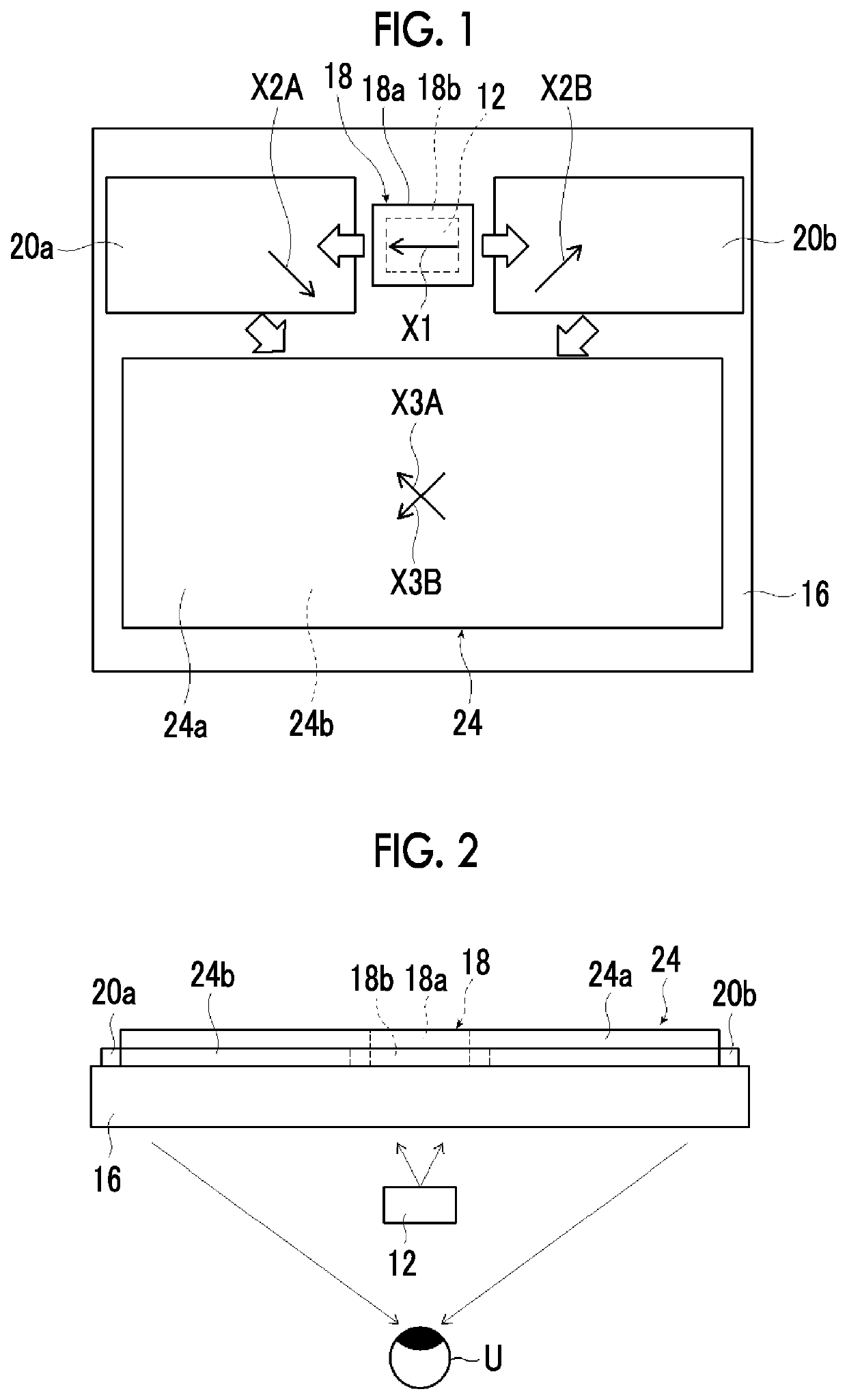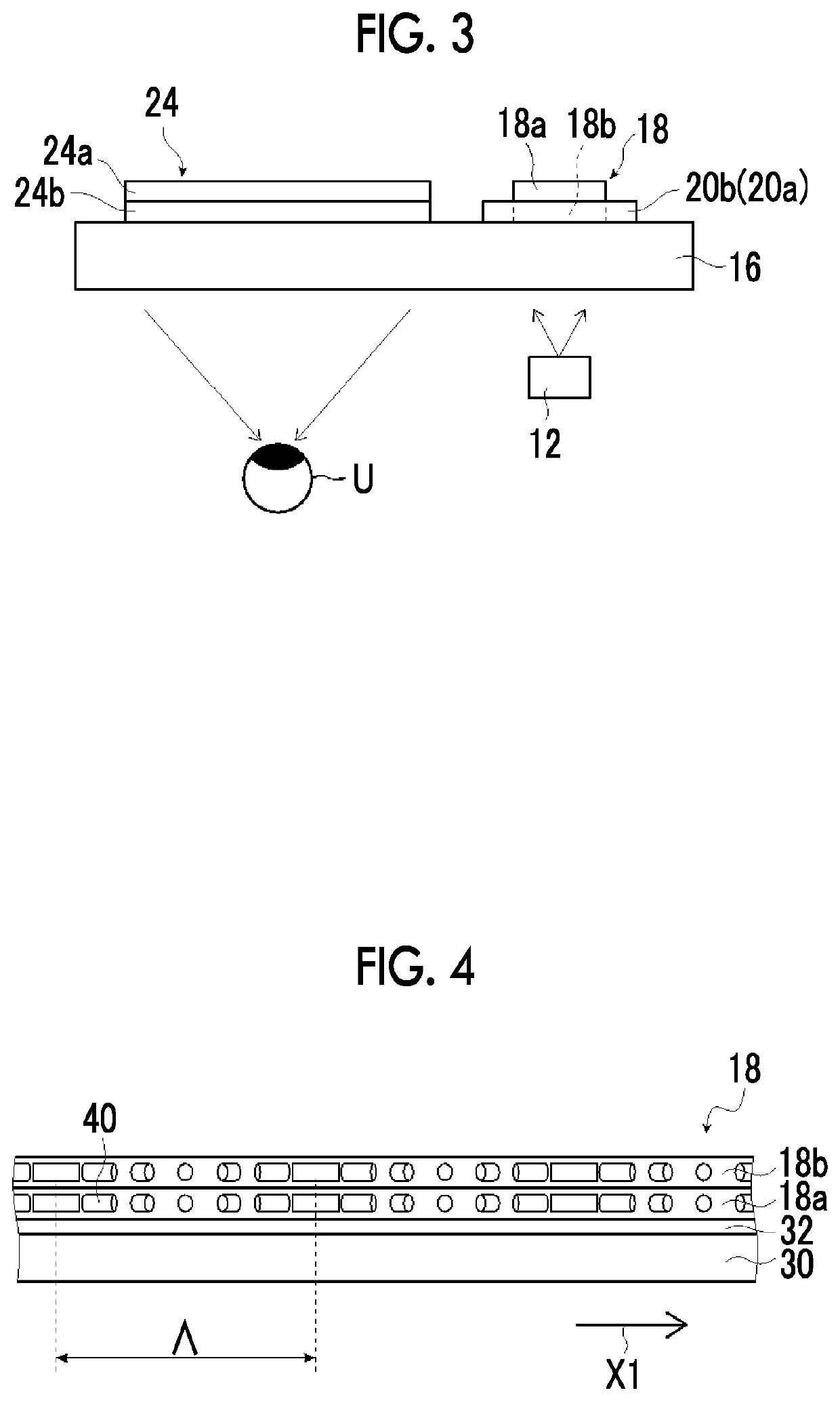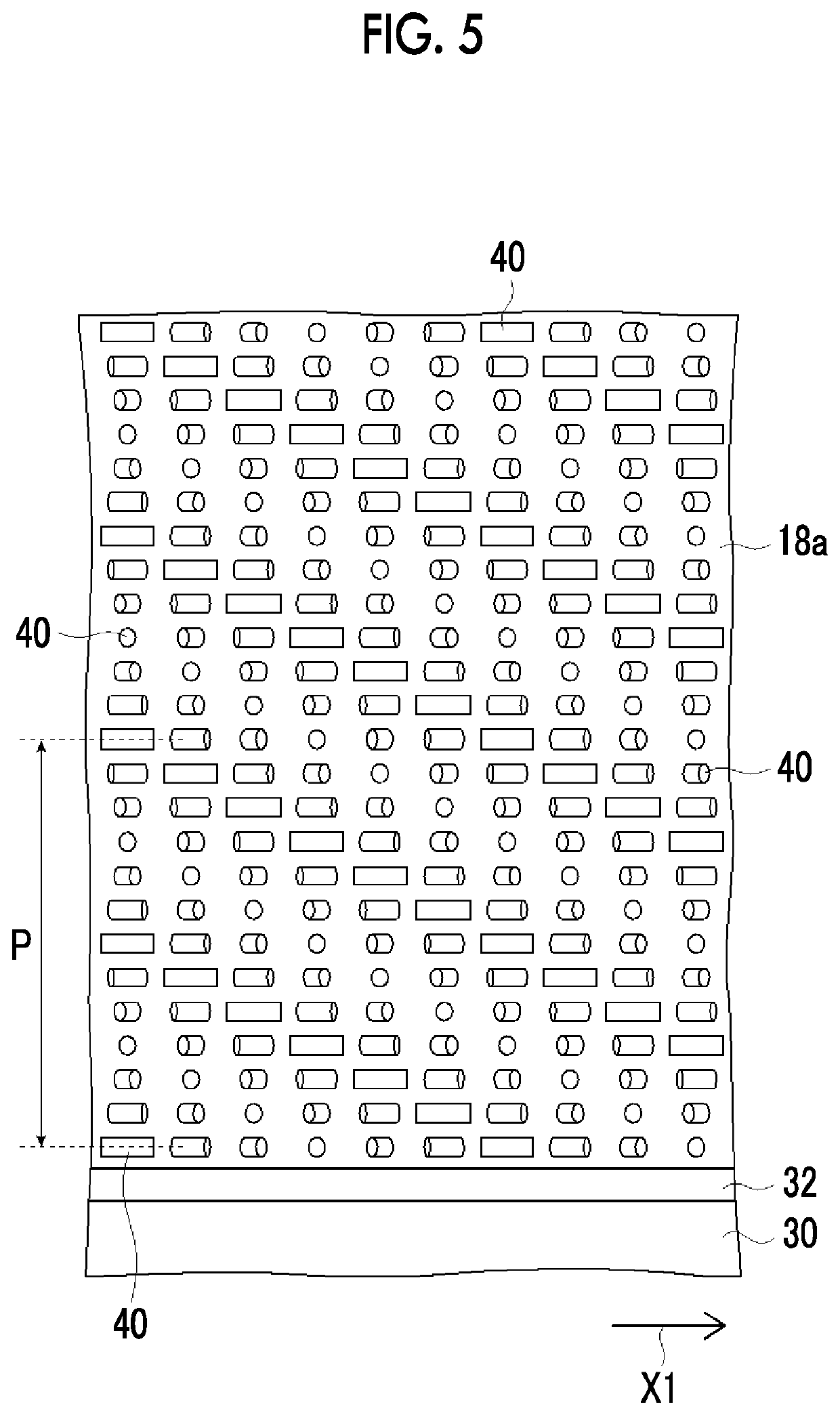Light guide element, image display device, and sensing apparatus
- Summary
- Abstract
- Description
- Claims
- Application Information
AI Technical Summary
Benefits of technology
Problems solved by technology
Method used
Image
Examples
reference example 1
[0443](Formation of Alignment Film)
[0444]A glass substrate was used as the support. The following alignment film-forming coating solution was applied to the support by spin coating. The support on which the coating film of the alignment film-forming coating solution was formed was dried using a hot plate at 60° C. for 60 seconds. As a result, an alignment film was formed.
Alignment Film-Forming Coating SolutionThe following material for photo-alignment 1.00 part by massWater16.00 parts by massButoxyethanol42.00 parts by massPropylene glycol monomethyl ether42.00 parts by mass-Material for Photo-Alignment-
[0445](Exposure of Alignment Film)
[0446]The alignment film was exposed using the exposure device shown in FIG. 15 to form an alignment film P-1 having an alignment pattern.
[0447]In the exposure device, a laser that emits laser light having a wavelength (325 nm) was used as the laser. The exposure dose of the interference light was 300 mJ / cm2. The single period (the length over which ...
reference example 2
[0460]Methyl ethyl ketone was applied to the first A diffraction element according to Reference Example 1 by spin coating, and an alignment film was formed on the first A diffraction element using the same method as that during the formation of the first A diffraction element. The alignment film was exposed using the same method as that during the formation of the first A diffraction element, except that the alignment pattern was formed by exposing the alignment film in a state where each of the optical axes of the λ / 4 plates 72A and 72B of the exposure device shown in FIG. 15 was rotated by 90°. By forming the cholesteric liquid crystal layer on the alignment film using the same method as that of the first A diffraction element, the first B diffraction element was formed.
[0461]As a result, the first A diffraction element and the first B diffraction element having opposite one in-plane directions in which the optical axis of the liquid crystal compound rotated were laminated to prep...
reference example 3
[0462]The first A diffraction element was prepared using the same method as that of Reference Example 1.
[0463]A first B diffraction element was formed using the same method as that during the formation of the cholesteric liquid crystal layer of the first A diffraction element, except that the composition A-1 was changed to the composition of the first B diffraction element according to Reference Example 1. The formed first A diffraction element and the formed first B diffraction element were bonded to each other to be adjacent to each other on another glass substrate using an adhesive (SK DINE 2057, manufactured by Soken Chemical & Engineering Co., Ltd.). In this case, the one in-plane directions in which the optical axis of the liquid crystal compound rotated were the same.
[0464]As a result, the first A diffraction element and the first B diffraction element having the same one in-plane direction in which the optical axis of the liquid crystal compound rotated were disposed to be a...
PUM
 Login to View More
Login to View More Abstract
Description
Claims
Application Information
 Login to View More
Login to View More - R&D
- Intellectual Property
- Life Sciences
- Materials
- Tech Scout
- Unparalleled Data Quality
- Higher Quality Content
- 60% Fewer Hallucinations
Browse by: Latest US Patents, China's latest patents, Technical Efficacy Thesaurus, Application Domain, Technology Topic, Popular Technical Reports.
© 2025 PatSnap. All rights reserved.Legal|Privacy policy|Modern Slavery Act Transparency Statement|Sitemap|About US| Contact US: help@patsnap.com



